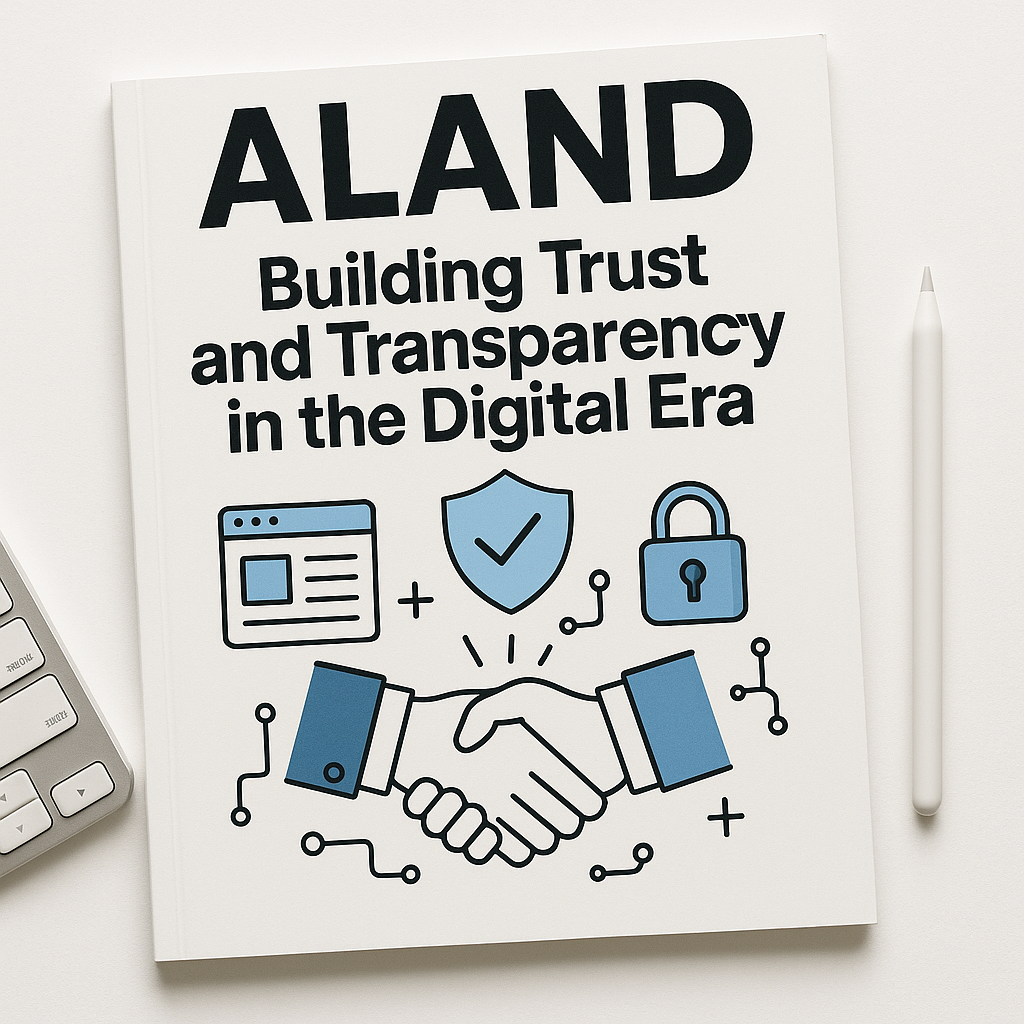Building Trust and Transparency in the Digital Era
- Published Date: 7th Jun, 2025
-
4.8★ ★ ★ ★ ★(145)

Listen to the Spotify Podcast for this article
By Dr. Pooyan Ghamari, Swiss Economist and Founder of the ALand Platform
The New Imperative—Trust as the Currency of the Digital Age
In an era where technology connects us at unprecedented speed and scale, we face a paradox: information is abundant, but genuine trust is alarmingly scarce. Every sector, from real estate to finance to digital commerce, is now shaped not only by innovation and capital, but by public confidence in how businesses operate behind the scenes.
Yet, too many organizations still cling to the illusion that trust can be manufactured through marketing, or that transparency is a risk rather than a competitive advantage. They are mistaken.
The truth is stark and urgent: In the digital era, trust and transparency are not just ethical choices—they are existential business strategies.
If your stakeholders cannot see, understand, and believe in how you operate, they will eventually find a competitor who makes them feel seen, heard, and respected.
The companies, platforms, and leaders who succeed in this new world are those who embrace vulnerability, communicate openly, and consistently deliver on their promises.
As a global economist and founder of a real estate and investment platform, I have witnessed the transformative power—and necessity—of trust-driven leadership in markets from Dubai to Zurich. This is your blueprint for turning transparency into an engine of resilience, reputation, and real-world impact.
Why Trust Matters More Than Ever
The Collapse of Old Gatekeepers
Digital technology has destroyed the traditional asymmetry of information. Clients, partners, and the public can now research, review, and compare you in minutes. Platforms like Glassdoor, Trustpilot, Reddit, and social media have democratized reputation.
Opaque businesses are no longer mysterious—they are suspect. “Black box” leadership is perceived as arrogant, risky, or obsolete.
The Rising Costs of Mistrust
A single breach of trust—a misleading product claim, a hidden fee, a privacy scandal—can erase millions in market value, stall a promising innovation, or drive away top talent.
By contrast, transparency builds loyalty, increases retention, encourages referrals, and protects your brand in times of crisis.
In my own experience advising global investors, I have found that trust is the ultimate risk mitigator, unlocking opportunities that are otherwise inaccessible to those seen as unreliable.
Trust as a Competitive Edge
In real estate, investment, and digital services, the companies that win are not just those with the best products or the lowest prices, but those who become the most trusted advisors in their field.
Trust compounds: each act of transparency, each fulfilled promise, becomes a building block of enduring market leadership.
Wizard Action Plan: Building Trust and Transparency by Design
1. Publish Behind-the-Scenes “Making-Of” Stories or Videos
How to execute:
-
Create short documentaries or blog posts about project launches, product development, or a day in the life at your company.
-
Feature real team members, real tools, and real dilemmas—not just polished success stories.
-
Make the “how” as important as the “what.” Explain trade-offs, risks, and values driving each choice.
2. Openly Share Failures and Lessons Learned (Transparency Posts)
How to execute:
-
Write candid retrospectives after major projects or campaigns, highlighting missteps, near-misses, and course corrections.
-
Encourage team members to contribute their own lessons learned, creating a culture of collective wisdom.
-
Turn negative experiences into teaching moments for your community and clients.
3. Host Monthly AMA (Ask Me Anything) Sessions with Leadership
How to execute:
-
Host regular live Q&A sessions—on social media, your website, or dedicated platforms like Reddit or Clubhouse.
-
Allow for tough questions and be honest about what you do not yet know.
-
Archive and share recordings, creating a transparent knowledge base.
4. Create a Public Dashboard for Customer Feedback and Response Time
How to execute:
-
Aggregate and publish real-time data on customer satisfaction, response times, and issue resolution.
-
Share trends (positive and negative), what you’re doing to improve, and progress over time.
-
Highlight particularly impactful customer stories—both compliments and complaints.
5. Implement and Publicize a Code of Ethics for All Communications
How to execute:
-
Draft a concise code of ethics that covers honesty, privacy, inclusivity, and conflict of interest.
-
Make the code visible on your website, marketing materials, and employee onboarding.
-
Train all staff in ethical communication and hold leadership accountable to the highest standards.
The Deep Logic of Transparency: Trust as a Multiplier
-
Market Differentiation: In a sea of faceless brands, the transparent company stands out.
-
Talent Magnet: The best professionals want to work where honesty and openness are the norm.
-
Resilience: When you build trust in the good times, you earn forgiveness and support during setbacks.
-
Growth: Transparent organizations are preferred partners for regulators, investors, and clients who value long-term relationships over short-term gains.
Transparency Is Not a Risk—It Is the Foundation of Digital Leadership
In the digital era, trust is no longer a “nice to have”—it is the very air your business breathes.
To build it, you must make your operations, your intentions, and your ethics as visible as your brand. The organizations that embrace transparency—warts and all—are not only more resilient, but also more innovative, more collaborative, and more influential.
Start with the wizard action plan above, and you will build not just a business, but a legacy.
About the Author
Dr. Pooyan Ghamari is a Swiss Economist, global strategist, and Founder of the ALand Platform. He is recognized for pioneering thought leadership in finance, digital transformation, and economic development. Dr. Ghamari advises governments and global institutions on how to harness transparency and trust as drivers of innovation, resilience, and long-term value in the digital economy.

